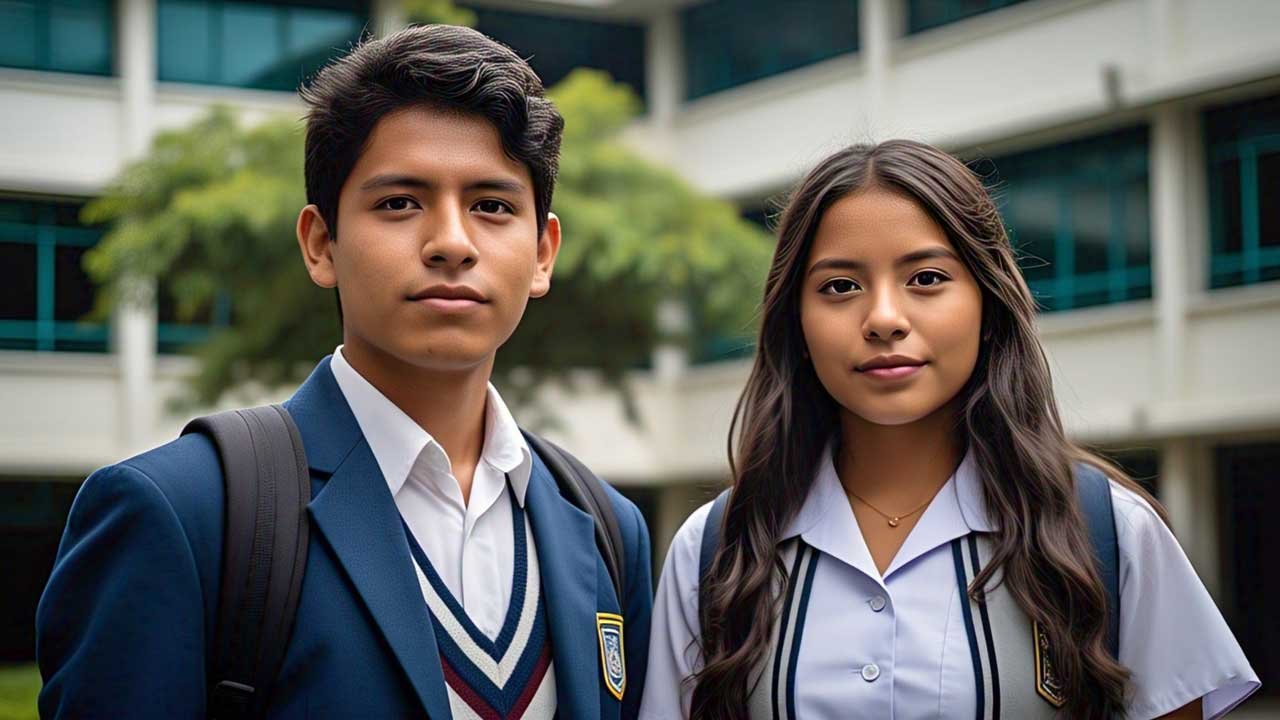Ecuador has significantly transformed its education system since the 2008 Constitution recognized education as a fundamental right and public service, resulting in expanded access, free public schooling, and improved enrollment and literacy rates. The system, overseen by the Ministry of Education, is structured into early childhood, basic, secondary, and higher education, with compulsory schooling from age 4 to 18.
Reforms have focused on teacher quality, infrastructure, curriculum, and learning assessments, contributing to near-universal primary and secondary enrollment. However, challenges remain, including educational inequality by region and ethnicity, teacher shortages and strikes, safety concerns in schools, and high dropout rates in higher education. Continued efforts are essential to ensure equitable, high-quality education for all.
Structure of Education in Ecuador
Ecuador has made significant strides in its education system in recent decades, transitioning from a state with a largely neglected school system to one where education is a central focus of public administration. This transformation is rooted in the 2008 Constitution and subsequent educational laws, which emphasize education as a fundamental right and a public service.
The Ecuadorian education system is regulated by the Ministry of Education and structured into several formal stages based on age, following a national curriculum.
1. Educación Inicial (Early Childhood Education)
Ages: 0 to 5 years
Levels:
- Nivel 1: 0–3 years (optional, primarily found in private or community settings).
- Nivel 2: 3–5 years (mandatory from age 4).
Focus: This stage emphasizes basic developmental skills and play-based learning, laying the groundwork for formal schooling.
2. Educación General Básica (Basic General Education)
Ages: 6 to 14 years
Grades: 1st to 10th
Divided Into:
- Subnivel Preparatorio (Preparatory): Age 5–6 (1st grade).
- Subnivel Elemental (Elementary): Ages 6–9 (2nd to 4th grade).
- Subnivel Medio (Middle): Ages 9–12 (5th to 7th grade).
- Subnivel Superior (Upper): Ages 12–14 (8th to 10th grade).
This stage is compulsory and forms the core of a student’s foundational learning. The official primary school entrance age is 6 years.
3. Bachillerato General Unificado (Unified General Baccalaureate)
Ages: 15 to 17/18 years
Grades: 1st to 3rd year of Bachillerato
Focus Areas: Students can choose from General Education, Technical Education, or specialized tracks (sciences, humanities, technical, etc.).
Outcome: Successful completion leads to a “Bachiller” diploma, equivalent to a high school diploma. This stage is also compulsory.
4. Educación Superior (Higher Education)
Ages: 18+
Types of Institutions: Universities, Polytechnics, and Technical Institutes.
Programs:
- Technical/Technological degrees (2–3 years)
- Bachelor’s degrees (4–5 years)
- Master’s degrees (1–2 years)
- Doctorates (3–5 years)
Access to public higher education often involves mandatory entrance exams.
Key Aspects and Statistics
Compulsory Education: Education is compulsory from age 4 (Nivel 2 of Early Childhood) through to the end of Bachillerato (age 17/18).
School Year: The academic calendar varies by region. It typically runs from May–February in the Sierra region and from September–June in the Costa region.
Language of Instruction: Spanish is the primary language of instruction, with bilingual programs available, particularly for Indigenous students.
Access: Public education is free and obligatory at the basic and secondary levels.
Enrollment Rates (2023 data where available):
- Preprimary school enrollment (2021): 55.29% (Net enrollment rate for early childhood education was 62.3% in 2021).
- Primary school enrollment: 97.30% (2023). Adjusted Net Enrollment Rate for Primary was 97.9% in 2017.
- Secondary school enrollment: 93.42% (2023).
- Tertiary school enrollment (2022): 59.88%.
Literacy Rates (2022 data):
- Total literacy rate: 94.00%.
- Youth literacy rate (15-24 years): 96.37% (Female: 96.67%, Male: 96.10%).
- Adult literacy rate (15+ years): 94.35% (2016 data; Female: 93.31%, Male: 95.45%).
Completion Rates (2023 data):
- Primary school completion rate: 100.20%.
- Lower secondary school completion rate (2021): 99.2%.
- Upper secondary education completion rate (2023): 79.7%.
Government Spending on Education:
In 2023, government expenditure on education as a percentage of GDP was 3.89%, a slight increase from 3.6% in 2022. This is slightly below the world average of 4.40%.
As a percentage of total government expenditure, it was 9.69% in 2023.
Reforms and Challenges
Ecuador has undergone significant education reforms, particularly since the mid-2000s, often driven by a “pivot to learning” approach. Key reforms have included:
- Reasserting State Control: The Ministry of Education has shifted from a purely administrative role to a leadership position in policy generation and management.
- Increased Investment: The budget for non-university education significantly increased, and policies were implemented to guarantee free public education by eliminating fees.
- Universalization of Enrollment: Initiatives aimed at stimulating demand for education and increasing the supply of educational services, particularly in preschool and secondary levels, which became mandatory. This included improving school infrastructure and increasing the number of teachers.
- Teacher Quality: Reforms focused on strengthening the teaching profession, including competency-based hiring tests, performance evaluations, and raising standards for teacher training programs.
- Learning Assessments: Ecuador began participating in regional and international learning assessments (like TERCE and PISA for Development) to benchmark progress and identify areas for improvement.
Despite these advancements, the Ecuadorian education system faces ongoing challenges:
- Quality Disparities: Significant gaps in educational outcomes persist based on geography (urban vs. rural), socioeconomic status, and ethnicity. Rural and Indigenous populations often have lower completion rates and fewer years of schooling.
- Teacher Absenteeism and Strikes: These issues can negatively impact retention rates and the quality of education, particularly in poorer areas.
- Overcrowding and Teacher Shortages: Some urban public schools experience large class sizes and insufficient teaching staff, with multiple grades sometimes taught in the same classroom.
- Sexual Violence in Schools: There have been alarming reports of sexual abuse, primarily with teachers as aggressors, highlighting a critical need for stronger protection and enforcement of zero-tolerance policies.
- “Brain Drain”: In some rural communities, youth who pursue higher education often do not return, leading to a loss of educated young adults in these areas.
- Access Barriers in Rural Areas: Despite free education, challenges like unsafe school structures (especially in the Amazon region), lack of transportation, and language barriers (e.g., Kichwa-speaking students taught in Spanish) continue to hinder access and retention.
- Higher Education Dropout Rates: Despite improved enrollment rates in higher education, completion rates remain a concern, partly due to low academic readiness and the duration of programs.
Ecuador’s commitment to education is evident in its constitutional framework and ongoing reforms. While significant progress has been made in expanding access and improving some indicators, addressing the persistent quality disparities, ensuring student safety, and further supporting teacher development remain crucial for achieving equitable and high-quality education for all its citizens.
FAQs on Age-wise Education System in Ecuador
What major changes has Ecuador made to its education system in recent decades?
Ecuador has reformed its education system significantly since 2008, making education a constitutional right, expanding access, and improving infrastructure and quality.
What stages make up the Ecuadorian education system?
The system includes Educación Inicial (early childhood), Educación General Básica (basic education), Bachillerato General Unificado (secondary), and Educación Superior (higher education).
At what age is education compulsory in Ecuador?
Education is compulsory from age 4 (Nivel 2 of early childhood education) through the end of secondary school (around age 17 or 18).
Who oversees the education system in Ecuador?
The Ministry of Education regulates and oversees Ecuador’s education system, including policy, curriculum, and administration.
Is early childhood education mandatory in Ecuador?
Yes, from age 4 onwards. Nivel 1 (ages 0–3) is optional, but Nivel 2 (ages 3–5) becomes mandatory at age 4.
What is the structure of basic education in Ecuador?
Basic education spans ages 6 to 14, covering grades 1 to 10, and is divided into four sublevels: preparatory, elementary, middle, and upper.
What options are available in secondary education (Bachillerato)?
Students can choose among general, technical, or specialized tracks in sciences, humanities, or technical fields.
Is secondary education in Ecuador mandatory?
Yes, completion of the three-year Bachillerato program is compulsory.
What types of higher education institutions exist in Ecuador?
Higher education is offered at universities, polytechnics, and technical institutes, with programs ranging from 2 to 5 years or more.
Is access to public higher education free in Ecuador?
Public higher education is free, but access often requires passing mandatory entrance exams.
What is the literacy rate in Ecuador?
As of 2022, the overall literacy rate is about 94%, with youth literacy (ages 15–24) at 96.37%.
How high are school enrollment rates in Ecuador?
Enrollment is high: over 97% in primary, 93% in secondary, and nearly 60% in tertiary education.
What challenges does Ecuador’s education system still face?
Challenges include educational inequality, rural access barriers, teacher shortages, school safety concerns, and high dropout rates in higher education.
How does the government support education funding?
In 2023, education spending was 3.89% of GDP and 9.69% of total government expenditure.
Are there bilingual education programs in Ecuador?
Yes, bilingual programs are offered, especially for Indigenous communities, with Spanish and native languages like Kichwa used in instruction.
What reforms have improved education quality in Ecuador?
Reforms include competency-based teacher hiring, performance evaluations, infrastructure upgrades, and participation in international assessments.
How does the academic calendar vary in Ecuador?
The Sierra region’s school year runs from May to February, while the Costa region follows a September to June schedule.
What is the completion rate for primary and secondary education?
In 2023, primary education had a 100.2% completion rate, and upper secondary education reached 79.7%.
What issues affect teachers in Ecuador?
Teacher absenteeism, strikes, and uneven quality contribute to inconsistent education delivery, particularly in underserved areas.
What steps has Ecuador taken to improve learning outcomes?
Ecuador participates in learning assessments like PISA and TERCE to monitor student performance and guide policy.
Why do some rural students struggle to access education?
Barriers include poor infrastructure, language differences, lack of transportation, and economic challenges.
What is the “brain drain” issue in rural Ecuador?
Educated youth from rural areas often do not return after completing higher education, impacting local development.
Are there concerns about student safety in Ecuadorian schools?
Yes, including troubling reports of sexual violence in schools, often involving staff, prompting calls for stronger protections.



Leave a Reply
You must be logged in to post a comment.